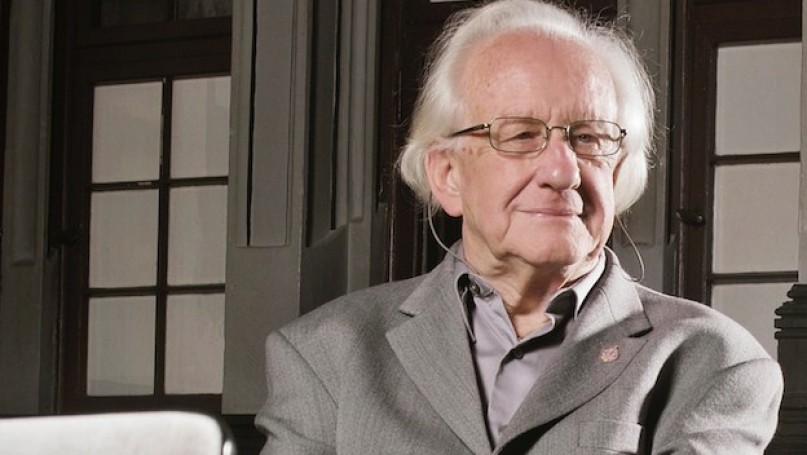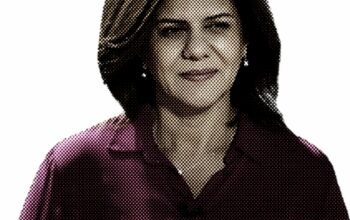In 1930, an individual born in Oslo, Norway, would go on to lead the academic field of peace and conflict studies, writing over 160 books and publishing 1,600 articles. His name is John Gualtung and is renowned as the ‘Father of Peace Studies’. During the midst of the Cold War on the year the Vietnam War started in 1958, Gualtung founded the Peace Research Institute Oslo (PRIO). This was the first peace institute in the world and remains as Norway’s only leading research facility in the field of international peace studies. Most recent publications produced by the PRIO include Putin’s war is stuck, beware the rising risks by Research Professor, Pavel K. Baev and Understanding variation and change in migrant transnationalism by Jørgen Carling.
The concept of peace is widely contested in the field of global politics. On this topic, one of Gualtung’s most notable pieces of work is the distinction between ‘positive’ and ‘negative’ peace. The ideas Gualtung developed can be applied from the community level, even in terms of playground bullying, all the way up to interstate war. Gualtung’s definition of peace has two crucial components.
- Peace is the absence or reduction of violence of all kinds.
- Peace is nonviolent and creative conflict transformation.
Gualtung, Johan. Peace by Peaceful Means: Peace and Conflict, Development and Civilization. Sage Publications, 1996. For Gaultung, conflicts will always exist, and they cannot necessarily be completely resolved, but they can be transformed so that conflicts can be dealt with without resorting to violence.
Gualtung defines violence as being one of three distinct types, which falls into categories of visible and invisible violence. The first type of violence or what Gualtung called ‘direct violence’, is violence that we can see. For example, states using military technology during warfare is a type of direct, visible violence. In the school playground, it’s when the bully is shaking down a younger student for their lunch money. The other two types of violence are invisible or the types of violence that we can’t necessarily see but create the conditions that allow direct violence to happen. The first of these invisible types of violence is what Gualtung called ‘structural violence’ and is all of the inequality that we have in society, that create those conditions that lead to direct violence. For example, economic inequality between the wealthy and lesser so, where the wealthy have access to better infrastructure, or resources, that the disadvantaged might not in a society. The inequality of gender in society that can create these possibilities for direct violence to happen. Finally, the third type of violence that Gualtung explained was cultural violence and it’s these elements of a culture or an ideology that are used to justify violence happening.
Gualtung stated, that when you have this reduction of these different kinds of violence, you’re on the road to peace, on the road to positive conflict transformation. However, the amount of these types of violence that you are able to reduce can vary the actual kind of peace that you have. Gualtung also explained peace as two different kinds. The first is negative peace, where for the most part, the only type of violence that you’ve reduced is direct violence. The absence of visible and direct violence creates a negative peace where you know there’s no killing or fighting happening, but there’s conflict present. This means that there is still the possibility of the current situation to erupt into a more direct violent conflict.
An example of this might be the current situation with North and South Korea, where the two sides aren’t actually directly involved in fighting or violence with each other but the conditions for the conflict are still very much there. Technically, both sides are still at war even though they’re not directly fighting each other. Those underlying conditions are still there but there isn’t direct violence between the two sides so we can consider that a negative peace. When you have a reduction in structural violence and when you have a reduction in cultural violence you might be on the road to a more positive peace.
An example of what might be considered a state of positive peace is after the Second World War, when European states realised that working together is more fruitful for the future. They laid the groundwork for today’s European Union. The European Union helps foster this idea of positive peace, and tries to eliminate those underlying issues between states. They can see that there’s benefits to working together and it’s a positive relationship between most of those states in the European Union. However, as we know the extent to which we’ve actually achieved that harmony with these different actors remains contested, as there is still some elements of conflict in all of the examples above. However, it is the ability to resolve those conflicts without resorting to violence that is different when there’s conflict between European states. We don’t see them going to war with one another as in the past, rather, a non-violent approach to conflict resolution is adopted, even if it means leaving the European Union entirely, as the case of the UK.
This leads to significant questions about peace, for example, is negative peace necessarily negative or is that absence of direct violence all that we can hope for? As invisible violence is so ingrained in society, it would be really difficult to move beyond them, and to what extent is positive peace possible in a world where we have significant structural inequality at all levels? In economics or in gender relations, we have big societal questions on how we can transform these conflicts to encourage the healing of those underlying structural issues. To Gualtung, this means approaching things with creativity and with imagination, that each conflict requires a different approach. We can learn from previous conflicts and apply some of those learnings moving forward to create more sustainable peace. As Gualtung said that “the proof of the pudding is in the eating, the test of a marriage is when the going gets rough, the test of peace is in the ability to handle conflict without recourse to violence”.
Meriam



